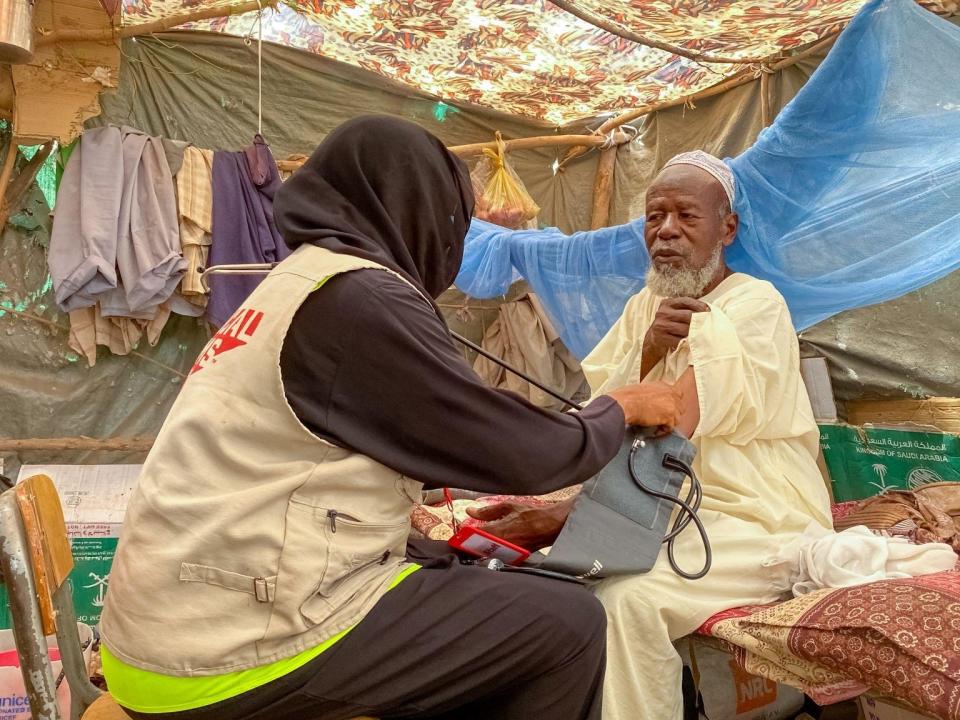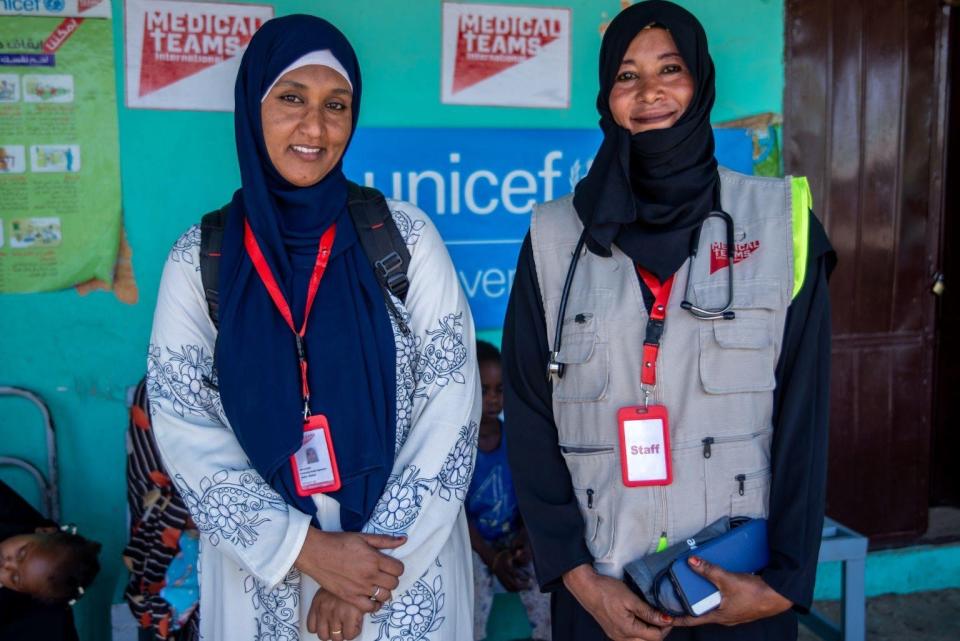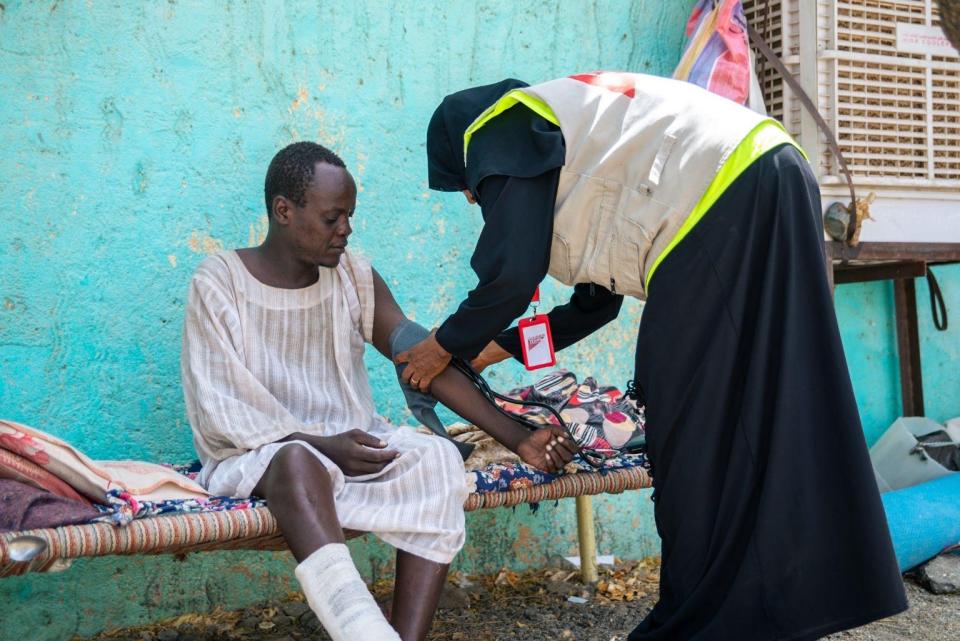After a year of war and hunger in Sudan, aid groups seek new help in forgotten crisis
One year ago, Marwa Ahmed Alrohima Mohammed was pregnant and treating patients at a hospital in the Sudanese capital of Khartoum when her country descended into civil war.
“It was so close. The bombs and the airplanes were right over our heads,” the 35-year-old physician told USA TODAY in a video interview. Fighting left some dead nearby her home, she said.
After holding out for several weeks, she escaped to the south on a bus with her family, navigating militia checkpoints in a dangerous 250-mile journey to Gedaref, near the Ethiopian border.
Now, a year after she fled some of the first blasts of the civil war, Mohammed works in Gedaraf treating some of the millions of Sudanese like her – people who fled a war they thought would end quickly, seeking help they thought would arrive soon.
Instead, they have found themselves amid a growing crisis that many aid workers say the world has largely forgotten.

The civil war has now killed more than 14,000 people, subjected countless people to sexual violence and displaced millions. Yet the U.N. has said its appeal for $2.7 billion in humanitarian aid for nearly 15 million people inside Sudan has been less than 6% funded. And aid deliveries that do arrive are hampered by fighting and other challenges.
Now aid groups are hoping an international donor conference to be held in Paris on Monday will bring new funding and urgency to address a humanitarian crisis that the U.N says has been neglected by the international community amid the wars in Gaza and Ukraine.
Tom Perriello, the U.S. special envoy to Sudan, told Reuters that the United States will make a “push” of more funding as Washington seeks to spur on international response at the conference, but he didn’t elaborate.
“People are dying because of lack of medicine and lack of food,” said Mohammed’s colleague, health worker Salma Salah, explaining that sometimes it means they can’t help those in need. “You just tell them to be patient, but you know that won’t work for very long.”

Both now work with U.S.-based Medical Teams International in Gedaref, where they see many wounds of war. But it is the cases of hunger that reflect the U.N.’s growing warnings about the threat of a wider famine. Already, 18 million Sudanese face acute food insecurity.
“Women are losing babies. More than 90% of the children under 5 are malnourished,” Mohammed said.
Some of Salah’s relatives – more than two dozen of whom are now packed into one home in Gedaref – keep watching the news for signs of a cease-fire or a new wave of international help so they can go home. So far, that hasn’t come.
“My mom always turns on the TV to see what is going on,” Salah said, “and there is no Sudan on TV.”
Why is there a war in Sudan?
The conflict was sparked by tensions between two top Sudanese generals.
Army leader Abdel Fattah al-Burhan and Mohamed Hamdan Dagalo, head of the Rapid Support Forces paramilitary group, had jointly ruled since taking power in 2019. But those tensions came to blows last April over plans to combine the two forces.
The conflict spread to other areas across Sudan in a battle that, unlike the country’s many previous conflicts, tore at Khartoum as well as other regions. Momentum has stalled, according to a report by the International Crisis Group on April 11. But the fighting continues.
In the year since it began, the group said, the conflict has been an “incontrovertible disaster for the entire country.”
Among the more than 14,000 dead are civilians killed in the escalating violence. Reports of conflict-related sexual violence continue. International Criminal Court prosecutors have said there are grounds to believe both sides are committing war crimes, The Associated Press reported.
Health care and banking systems have teetered on collapse. Of the country’s 49 million people, more than 8 million have been displaced, the U.N. said, both within Sudan and into neighboring nations South Sudan, Chad, Central African Republic, Egypt and Ethiopia, straining resources and threatening the stability of the wider region.
The war has also hobbled domestic agricultural production. Food that is available in markets has shot up in price. Of the 18 million people facing acute food insecurity, nearly 5 million of these are in emergency levels of hunger, according to the World Food Program, which has worked to deliver aid to those who need it in the region.
But that’s not easy, the Crisis Group said. Most of those suffering acute food insecurity are stuck in areas of active conflict, including millions of residents in Greater Khartoum and Gezira.
“The two sides generally show callous disregard for civilians’ plight, with the RSF demanding sky-high fees from aid trucks at checkpoints or stealing their cargo, while the army tries to block relief in RSF-held areas, where many camps for the internally displaced and devastated towns have been unable to receive assistance,” the group said in its report.
The Sudan INGO Forum said the country could face losing hundreds of thousands of lives to hunger.
Helena Cardellach, director for Doctors Without Borders in the country, told USA TODAY the organization also faced challenges getting supplies to areas of need. She said the overall situation was growing increasingly dire.
“The situation is even worse now than six months ago,” she said.
Hopes for a new boost of humanitarian help

Each day at her clinic in Gedaraf, set among a center for displaced people, Mohammed and other staffers with Medical Teams International provide a range of care, including health and nutrition services. She sees nearly 100 patients a day, among the nearly half-million people who have filled this city as they flee the violence.
Some need medicine for chronic conditions. Others have experienced sexual abuse. Malnutrition is common. And many have no money to flee to safer countries – like one woman she treated, who was caring for two disabled children after their father had been killed. Both were malnourished. “I worry about famine,” she said.
Diplomatic efforts, including the U.N. Security Council’s call last month for a cease-fire, have not persuaded the two sides to stop the fighting.
The Monday meeting in Paris will bring together leaders from neighboring countries, regional actors, Western states and U.N. agencies and nonprofit groups working in the area, Reuters has reported. Aid groups hope for a major scaling-up of the humanitarian response.
"The international response has been pitiful. We're at 5% of the needed amount," Perriello recently told Reuters, adding that the U.S. has already committed more than $1 billion in humanitarian relief to the conflict.
"We'll be doing another nine-figure push around this," he said, without elaborating.
The Crisis Group said diplomats need to push harder on the two warring sides to accept a ceasefire. And it said aid donors should consider funneling money through local volunteers in areas where most major aid organizations have left.
“It has been everyday Sudanese who have ? often at great personal risk ? stepped up to support each other and become a lifeline for millions of Sudanese,” Eatizaz Yousif, Sudan director for the International Rescue Committee, said in a statement.
Salah continues her work with Medical Teams in Gedaref, where she can sometimes hear bombs from distant fighting.
Earlier this month, several drone attacks on Army sites hit Gedaref, according to news reports, threatening what had been a relatively safe haven. Salah said the group has evacuation plans at the ready.
Salah’s parents are still in shock over a conflict they thought would last only a few months at most. They keep their things ready to return, desperately wanting to go home to Khartoum.
Salah must tell them each time that it’s still not safe as fighting continues with no end in sight. But they persist.
“Each day my parents pack their bags,” she said. “Every single morning.”
Until the conflict abates, Mohammed keeps up her daily routine. She gets up early, makes tea and climbs on a rickshaw to travel to the clinic. It’s a place where army checkpoints dot the city and residents must be off the streets before a nighttime curfew.
But Mohammed makes the trip carrying her own pain. Her pregnancy, which finally came after multiple medical procedures in her quest to have a child, was lost amid her flight.
This article originally appeared on USA TODAY: War in Sudan: Millions face threat of famine as aid goes lacking
